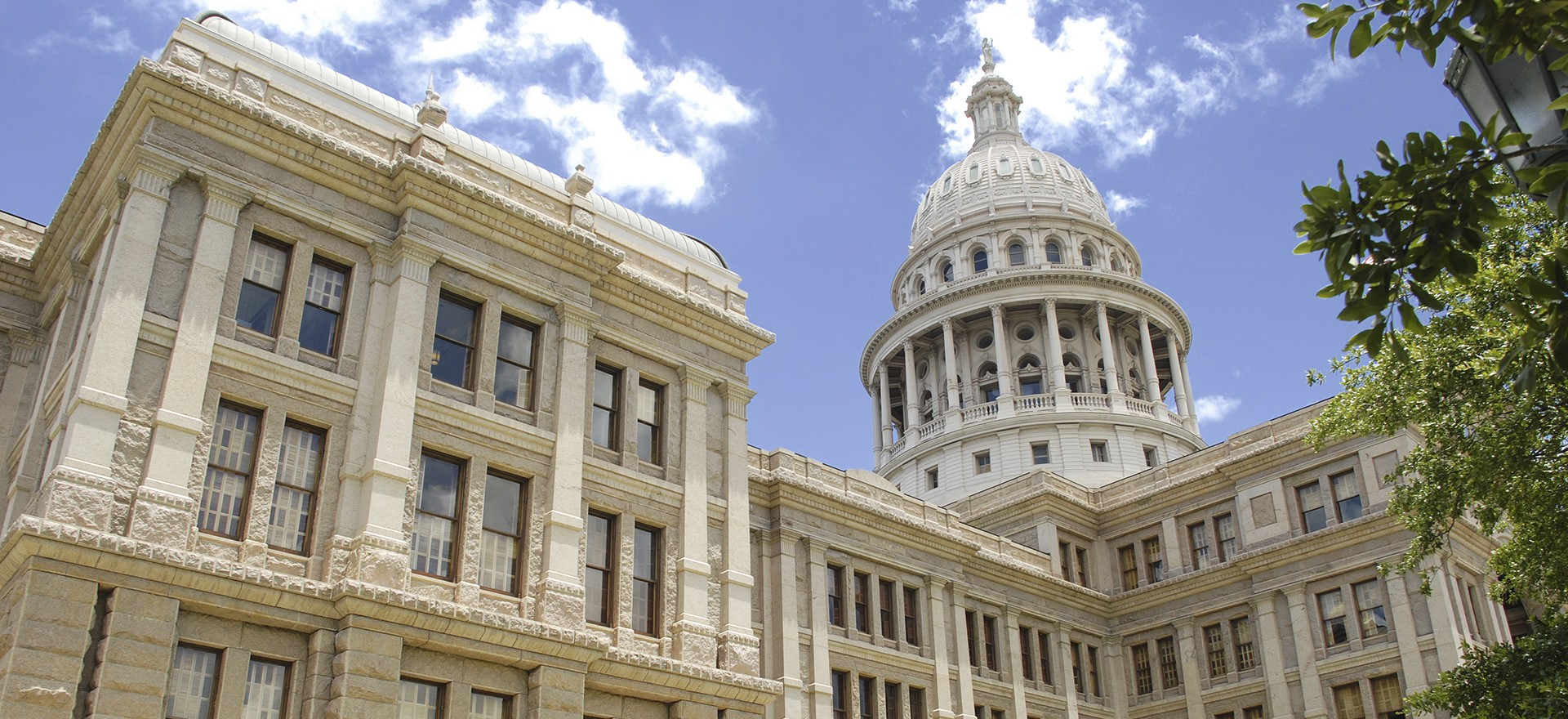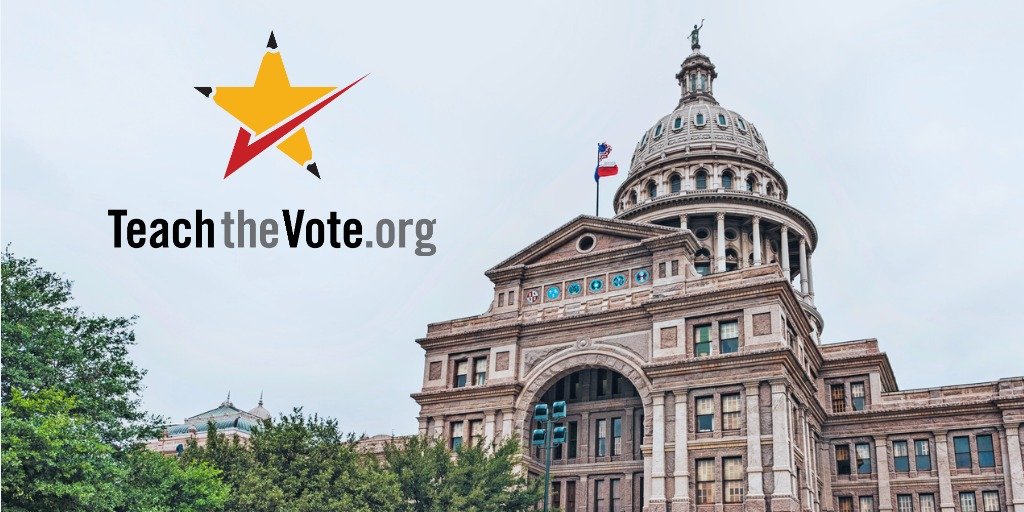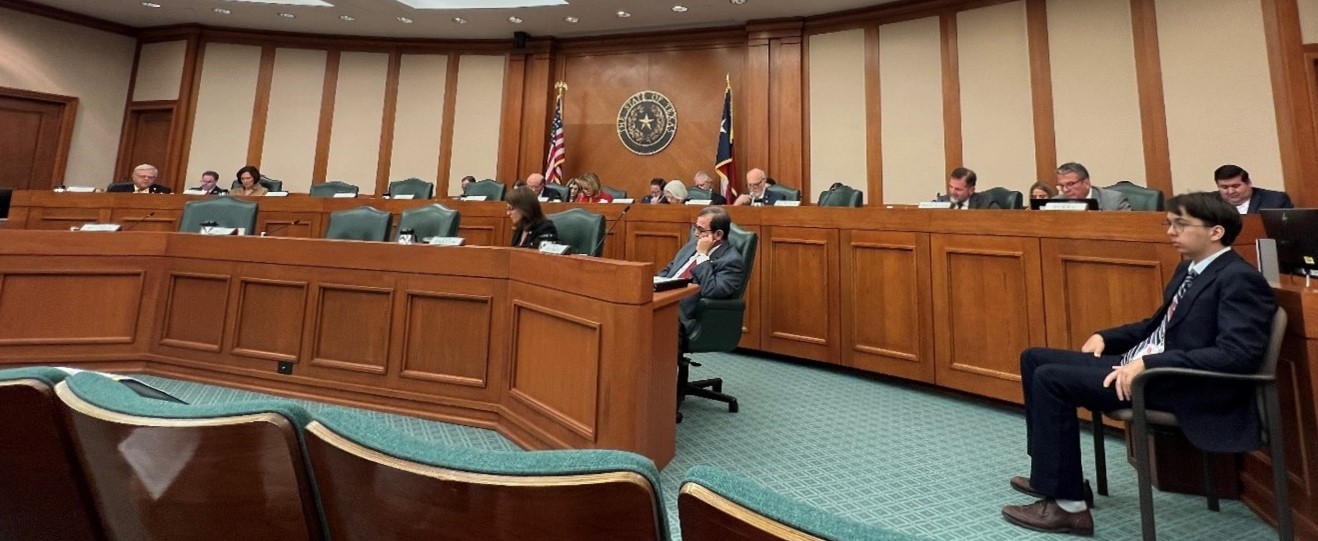Senate Committee on Finance discusses enrollment trends

Date Posted: 10/11/2024 | Author: Heather Sheffield
The Senate Committee on Finance met Wednesday, Oct. 9, 2024, to hear testimony on and to review expenditures of funds appropriated to the Texas Film Commission for the Texas Moving Image Industry Incentive Program and studying post-pandemic student enrollment trends, including examining the possible causes behind the shift in student enrollment, including the rise in homeschooling, micro-schools, and other parental choice options and make recommendations to ensure parents and educators have the tools and resources needed to respond to the projected enrollment changes and ensure that every child has the best educational options available to learn.
While K-12 education was not directly discussed as part of charge one, the benefit of significantly increasing the amount of locally available skilled labor (primarily not actors) was discussed fairly in depth. The movie industry is currently bringing in labor from out of state with the necessary skills to work in the movie industry. Not discussed, but of note, many of these positions seem ripe for the type of training students receive for other industries in public high school CTE programs.
The committee kicked off charge two with invited testimony from Maggie Jebsen from the Legislative Budget Board (LBB), followed up by testimony from Texas Education Agency (TEA) Commissioner Mike Morath; Jeremy Newman, Vice President of Policy at the Texas Home School Coalition; and Laura Colangelo, Executive Director of the Texas Private School Accreditation Commission. Unfortunately, the committee did not invite anyone to testify from the perspective of public school districts, educators, or parents.
Jebsen presented an LBB slide deck on the Foundation School Program (FSP) and state aid. Highlights included slides showing ADA vs. WADA and how much the state budgeted vs. the actual amount given to districts, as well as settle-up information. Sen. Lois Kolkhorst (R–Brenham) asked about the settle-up cost for 2019-2024, noting that the estimates were higher than the actual amounts. She asked if funding was “clawed back” or recovered from districts because districts estimated higher enrollment and were initially funded at those higher numbers. Jebsen explained that districts did in fact have to give that money back to the state during “settle-up.” Their conversation indicated that when this happens it can lock districts into a vicious cycle where they feel the need to keep overestimating to “float” their budget in the current year after paying back the prior year’s overage. Sen. Robert Nichols (R–Jacksonville) commented that districts which have overestimated projected enrollment are then forced to gear up for their expected enrollment with teachers, etc. and when those students don’t all show up, they don’t fire teachers.
Legislators were shown that the largest amount of money recovered from districts by the state was during and after the pandemic. The state used federal funds to hold the districts harmless while they simultaneously asked for money back for overestimated average daily attendance (ADA).
Sen. Charles Perry (R–Lubbock) mentioned an issue pertaining to companies suing to reduce the amount they would pay for taxes. He noted that this common business practice is a real issue and commented that businesses are never going to pay the appraised values, and it negatively impacts school district budgets. He said he is interested in finding out how to fix this issue but doesn’t know how.
Next up to testify was TEA Commissioner Mike Morath. A primary theme of the commissioner’s testimony was that enrollment is down statewide. However, to date this is a bit of a misstatement on Morath’s part as TEA’s own data shows that while enrollment growth has recently declined, year over year, public school enrollment has increased every year for at least the last two decades, with the exception of the 2019-20 school year during the height of COVID, What has been verified is that Texas has recently had smaller cohorts of four-year-olds progressing towards and ultimately enrolling in K-12 education. This Texas trend matches the rest of the country, which has been experiencing a nationwide decline in birth rates. While this trend has yet to cause a decline in the overall number of students attending public schools year over year, TEA projections, based on numbers from the state demographer, indicate likely declines over the next few years.
Later, during invited testimony from the Texas Home School Coalition, Mr. Newman discussed how there was a large shift to home schools during the pandemic, but many have already returned to their community schools. Mr. Newman also indicated that many students who are home schooled return to a public school after three to five years.
Sen. Brandon Creighton (R–Conroe) continued to assert that “moms and dads are looking for more school choice,” and that he sees the drop in enrollment as evidence of that.
Separate from enrollment, Morath testified that attendance rates, which dipped during the pandemic, have not fully recovered. This drew comments from senators about strengthening truancy laws. Responding to his colleagues, Creighton mentioned that he couldn’t get a truancy bill out of committee last session but that they should try again.
While enrollment growth and attendance are both down, there has been a significant increase in students who have been identified as needing special education services. Morath highlighted the significant increase in special education evaluations as another reason districts are facing deficit budgets, citing a cost between $1,000-$5,000 for each evaluation assessment (per student). Responding to follow-up questions on the increase of students who receive special education, Morath mentioned the Texas Commission on Special Education Funding recommendations. He suggested that legislators could change the funding model to fund based on intensity of services delivered instead of the current model and that they could increase overall funding to match costs with revenue. This idea had broad bipartisan support but ultimately died when the authors attached a voucher to the legislation.
The senators had a wide array of questions. Sen. Creighton asked Morath if he thought capacity reporting would be helpful. Morath answered that such reports would be helpful to the legislators to make decisions to better support open enrollment (transfers). Creighton also mused whether the capacity available in district schools should be made available to charter schools. He did not seem to contemplate that many charters are also underenrolled or how the interplay of campuses, of sometimes dozens, of different charter operators impacts excess capacity and underenrollment issues in a geographic area. Sen. Creighton also, without citing any particular basis, attributed decline in enrollment in the largest districts to “urban sprawl” and complained about Houston ISD. Creighton also commended Houston ISD commissioner appointed superintendent Mike Miles for the decisions he has made, which included firing staff.
Sen. Nichols mentioned visiting his districts and said that his districts are telling him they have deficit budgets more than ever before because of inflation costs and the fact that the basic allotment hasn’t increased, and funding hasn’t made it to schools. Nichols asked about charter schools having zero students who receive special education services.
Sen. Kolkhorst asked about the $21 billion in ESSER funds that came to the state. She asked for clarification on ESSER 1 (federal COVID relief) and verified that was used for hold harmless in 2019-2020 along with ESSER 2 and said that ESSER 3 money went to districts. She asked if that was the highest amount of money ever given to our public schools. Morath said that not all schools got the same amount from ESSER funds. She mentioned that inflation is real and asked what would he say to a superintendent that says the basic allotment hasn’t gone up since 2019 despite the money districts got from ESSER, etc. Morath answered by saying it is his role to distribute all the funds that he’s allocated, implies it is the legislators’ role to do the allocating. He suggested that worthy investments by the legislature would be in teacher pay and teacher preparation programs. He suggested districts do a cost-benefit analysis to see what evidence they have that shows an improvement in the education of children. Kolkhorst said we should incentivize teachers to stay in the classroom and to focus on the students.
Sen. Perry asked about SHARS money contributing to deficit budgets. Morath said that was about a $400 million loss to districts. He also asked Morath about the property tax appraisal appeal times. Morath responded that the change between estimated values, certified values and appealed taxes can break district budgets. Perry mentioned that we should have inflation adjustments in the basic allotment because we keep creating a problem with the need to appropriate large investments instead of common-sense practical, smaller adjustments along the way.
ATPE submitted written testimony to the committee. You can watch the full hearing here.
CONVERSATION
RECOMMENDED FOR YOU

12/18/2025
Gov. Abbott’s property tax promise and the split in the Texas GOP
Property taxes aren’t just a political talking point. They’re the main revenue source for vital local services, including police, fire, and public education.

12/12/2025
Dec. 8 filing deadline sets the stage for 2026 elections
Now’s the time to confirm your voter registration and update it if necessary.

12/12/2025
Teach the Vote’s Week in Review: Dec. 12, 2025
TEA announces plans to take over Lake Worth, Connally, and Beaumont ISDs. Plus: The ATPE Podcast is back with a refreshed format.


Good discussion!